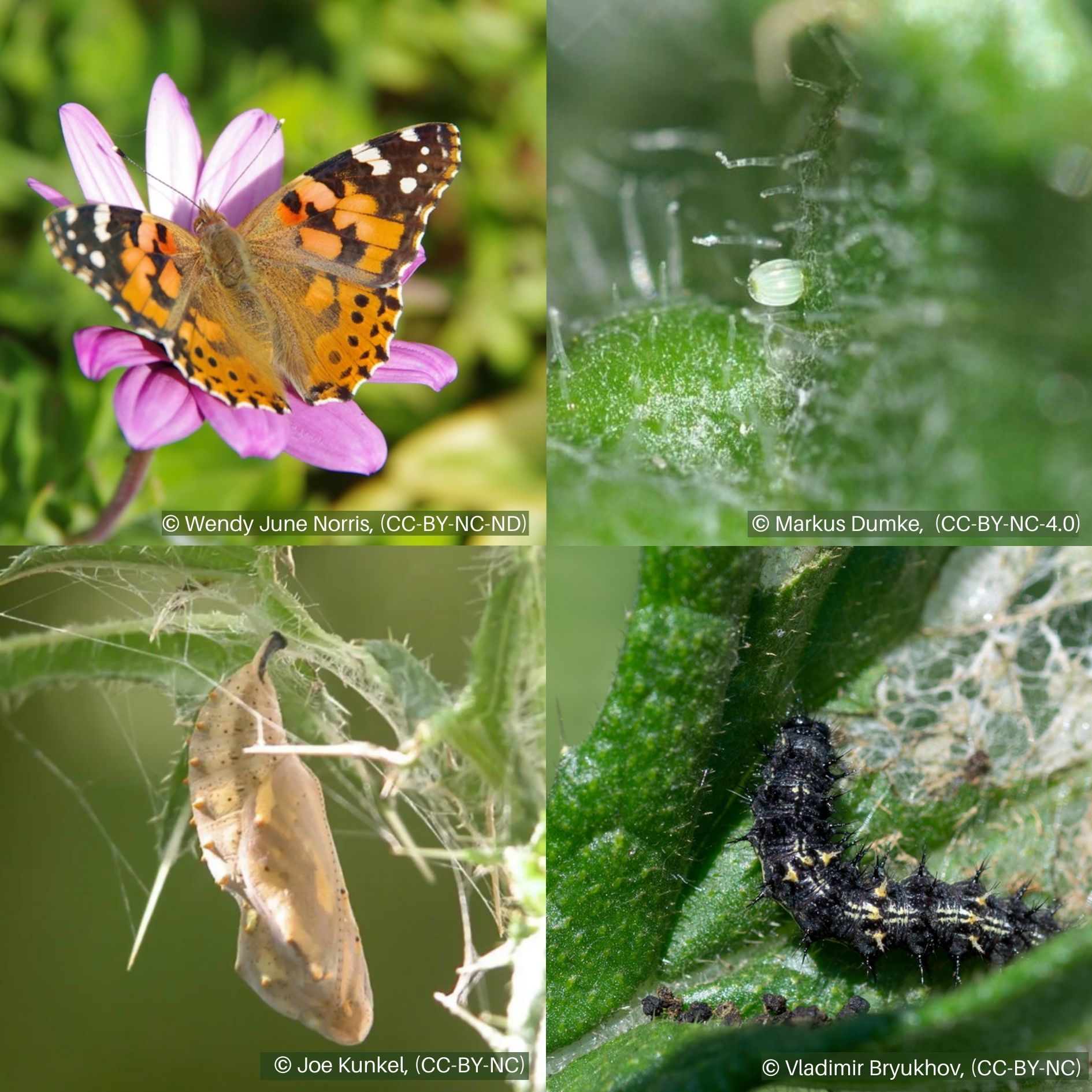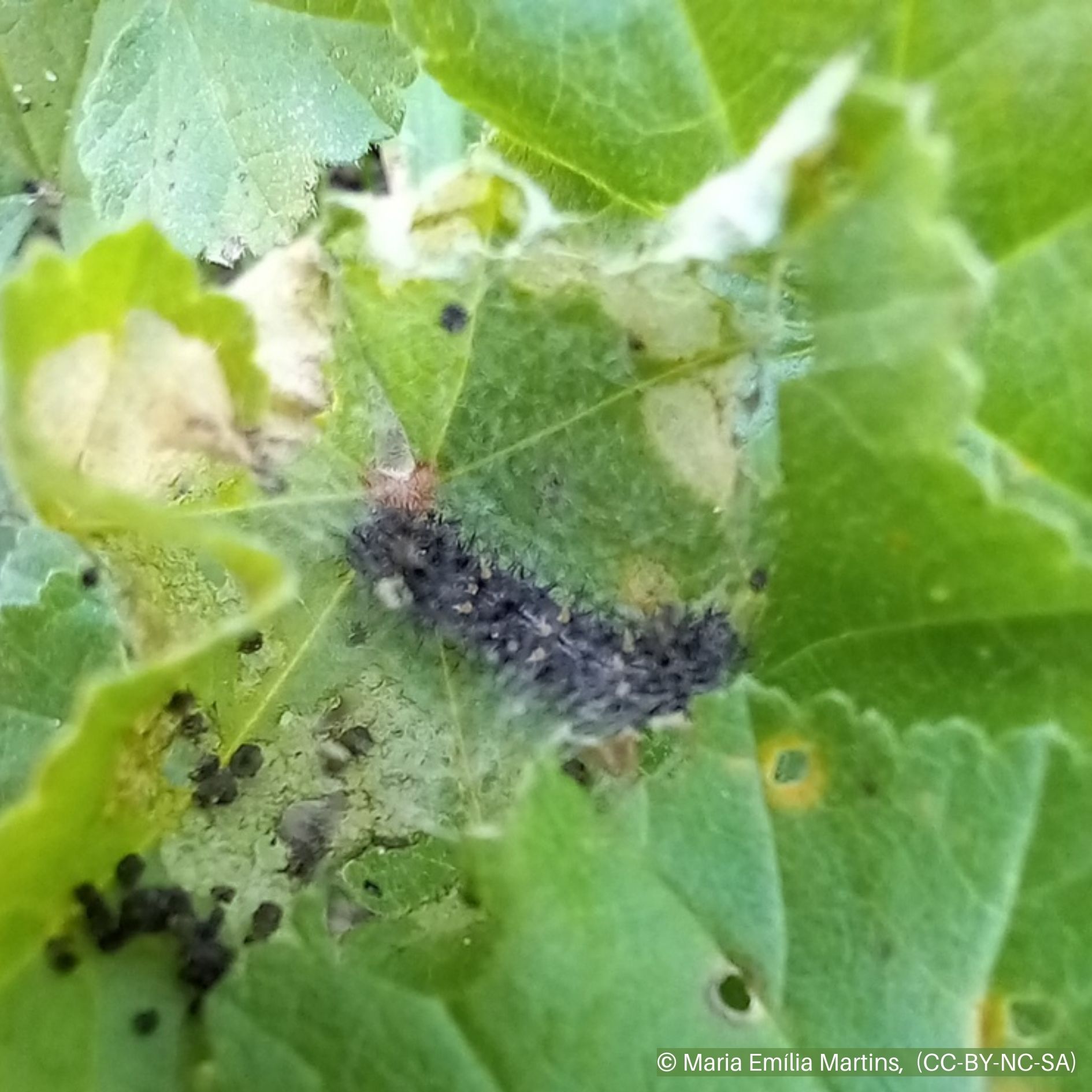Thistle Butterfly (Painted Lady)
 Thistle Butterfly (Painted Lady) Life Stages
Thistle Butterfly (Painted Lady) Life Stages Thistle Butterfly Caterpillar in Silk Nest with Frass
Thistle Butterfly Caterpillar in Silk Nest with Frass Thistle Caterpillar Feeding Damage on Thistle Plant
Thistle Caterpillar Feeding Damage on Thistle Plant Artichoke Plant with Severe Feeding Damage from Caterpillars
Artichoke Plant with Severe Feeding Damage from CaterpillarsHOSTS
- Artichoke
- Sunflowers
- Soybeans
- Ornamentals
- Weedy Thistles
OVERVIEW
The thistle butterfly (Vanessa cardui), also known as the painted lady butterfly, belongs to the family Nymphalidae. While they do not overwinter in Utah, they are common in the spring and summer months. The larval stage of the thistle butterfly can cause damage to host plants as they feed.
DESCRIPTION
Adults have orange wings with black and white patterns that span 2-3 inches (50-76 mm) across. Larvae are spiny, brown/black with yellow markings. Mature caterpillars reach 1.5-1.75 (38-45 mm) inches long.
BIOLOGY
Egg | Larva | Pupa | Adult
Adults migrate to the southwest U.S. or Mexico for winter and migrate back north in spring. Eggs are laid singly on host plants and will hatch after 3-5 days. As they feed on the host plant, caterpillars will web together leaves with silk, creating a leaf tent. Pupation occurs in protected sites on or near the host plant. There can be several generations of thistle butterflies per year in Utah.
SYMPTOMS
Caterpillars feed on leaves, creating ragged holes and leaving silk webbing and frass behind.
SCOUTING
- Start scouting during the late spring to midsummer for egg-laying adults, eggs, larvae, and feeding damage
GENERAL MANAGEMENT
- Caterpillar populations will rarely reach treatment thresholds in plants other than soybeans or artichokes.
- Treatment thresholds will vary depending on the life stage of the host plants.

